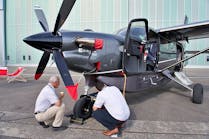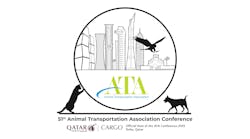Partly Sunny Skies for Mechanic Careers According to Latest Government Projections
Recently, the Bureau of Labor Statistics (BLS) published new career projections in its Occupational Outlook Handbook. The biennial publication provides earnings reports, growth projections and replacement needs for hundreds of occupations, including “Aircraft and Avionics Equipment Mechanics and Technicians.”
(It is important to note that the BLS data does not distinguish between certificated and noncertificated personnel. A request by ATEC and other trade organizations to make the distinction went unheeded in the 2018 Standard Occupational Classification revision.)
The latest handbook adopts new methodologies for calculating replacement needs (i.e., how many jobs will need filling due to retirement). Under the new approach, the projected number of openings for new aircraft and avionics equipment mechanics and technicians increased from 3,300 to 12,400 per year. And anticipated growth jumped from 1% to 5%—in line with the national average.
The change has had positive ripple effects. The U.S. Labor Department-sponsored resource MyNextMove.org historically dubbed aviation mechanic and technician jobs as “less likely in the future.” The new numbers upgrades the aviation maintenance career outlook from “below average” to “average.” (“Bright outlook” designations require 10% projected growth, or 100,000 or more job openings over the next ten years.)
BLS Division Chief Michael Wolf says that the new methodology better captures today’s dynamic workforce, “The once-traditional career path of entering an occupation at a young age and working until retirement in that same occupation is no longer the norm for American workers. Now, it’s common for workers to work in a number of occupations throughout the course of their career.” According to Wolf, “The new separations methodology captures these dynamics and allows us to better produce employment projections for workers and businesses to plan for their futures.”
While many would insist that careers in aviation maintenance have a better than “average” outlook, the boost in projection numbers could mean better funding for educational institutions that rely on scholarship and grant distributions that are often times prioritized according to BLS data. Programs producing candidates for “growing industries” are—not surprisingly—given precedence over occupations with less anticipated growth.
While industry could certainly use a bigger boost given growing workforce concerns, the numbers are certainly moving in the right direction.
Want to learn more? Come to the annual conference (March 17-20) and hear directly from BLS Division Chief Michael Wolf on the new numbers.


